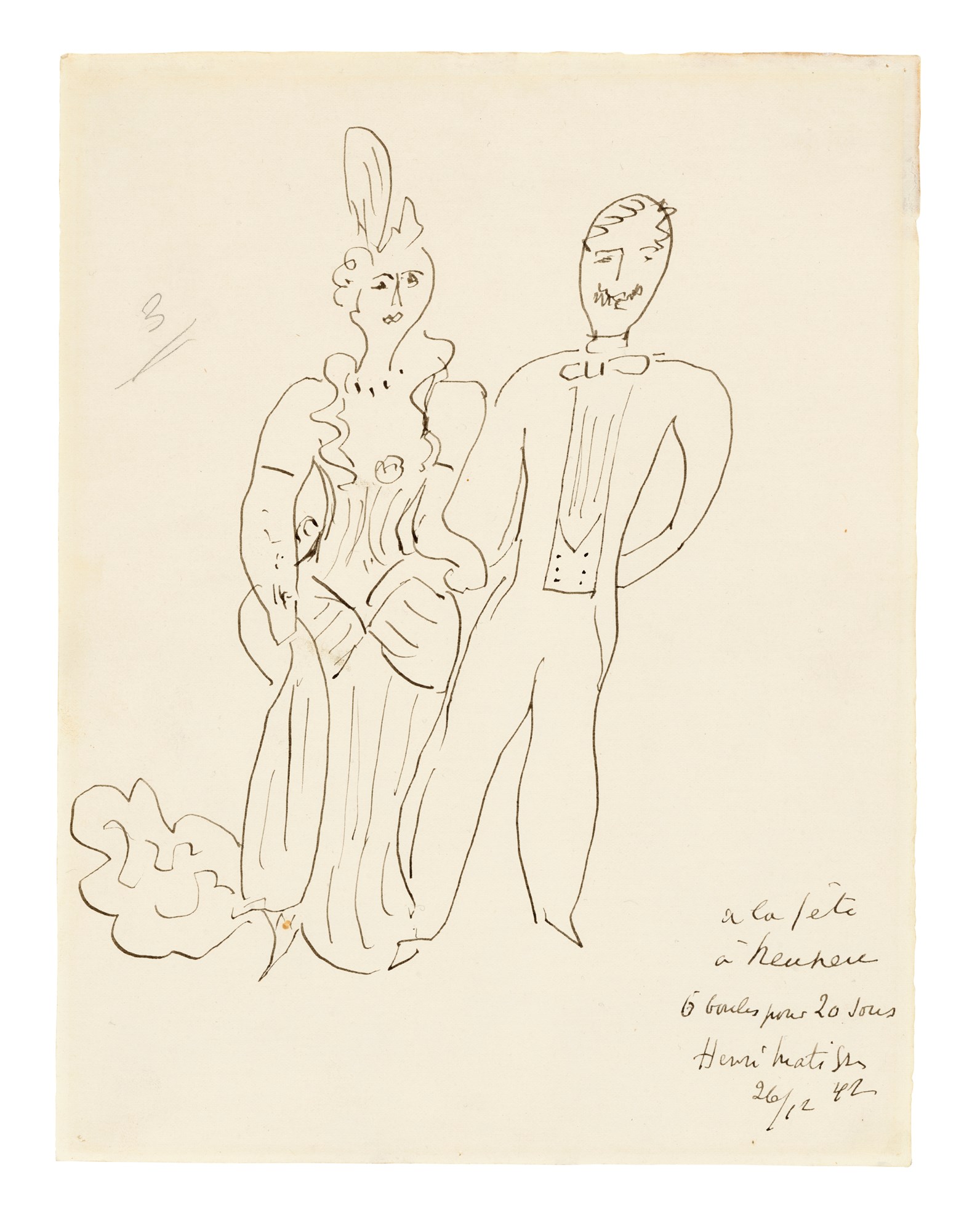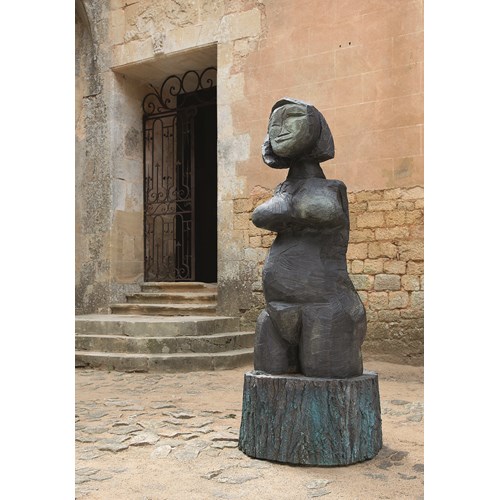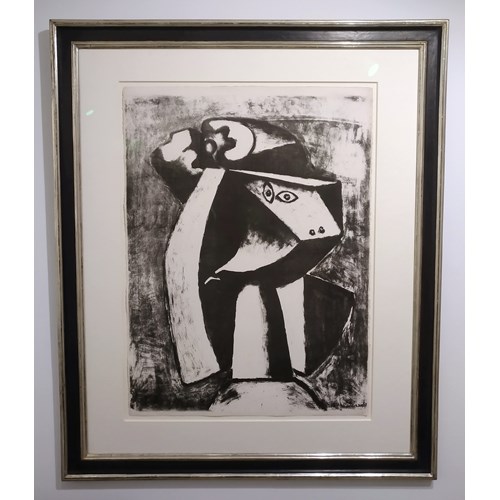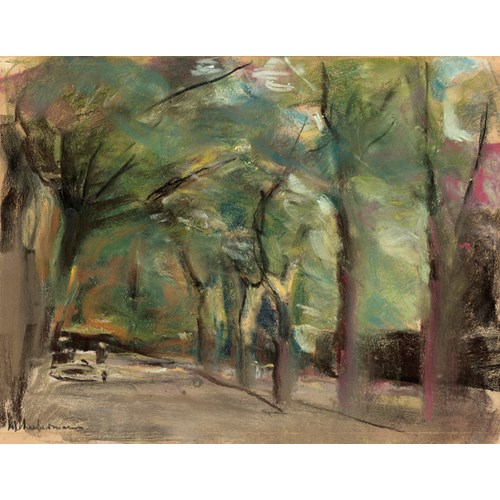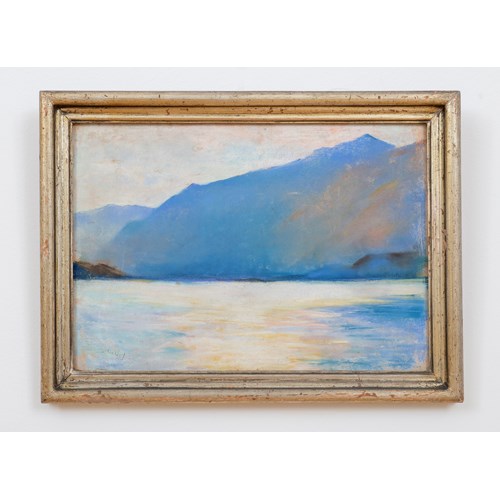Marketplace
Homme et Femme
Henri Matisse
Homme et Femme
Date 26. Dezember 1942
Period 20th century
Dimension 26.7 x 20.3 cm (10¹/₂ x 8 inches)
Framed dimension cm (15³/₄ x 11³/₄ x 1¹/₈ inches)
The French painter, draughtsman and sculptor Henri Matisse is considered the founder of Fauvism. Internationally renowned for his bold colour painting, Matisse thought in a unique way about how our three-dimensional world could be represented in the two-dimensional medium of painting. His radical simplification of form is formative for modern art. In his writings ‘On Art’, he stated that he ‘dreamed of an art of balance, of purity, of calm [...]; an art that is a tranquilliser for every mental worker [...], a rest for the brain, something like a good armchair in which one can recover from physical exertion.’ (1)
Alongside his colourful and two-dimensional painting, drawing remained an independent, never-ending process of clarification for Matisse throughout his life. Matisse was aware of this very early on, as he presented drawings in his very first exhibitions. His first great admirers, from Gertrude Stein to Jacques Doucet, from Marcel Sembat to Gustave Fayet, were also aware of this and bought them without hesitation. (2)
In his drawings, Matisse used minimal means to characterise various objects, skilfully bringing bodies to life on paper with fine strokes. An extreme close-up view makes the interplay appear as a detail. The arranged objects are taken from the artist's immediate surroundings. The experienced artist was inspired to draw by what he saw rather than what he imagined. He captured the outlines with a few thin lines, conveying the material quality and at the same time an idea of weight and volume.
Matisse devoted himself to art until the end of his life. After a serious illness at the beginning of 1940, he was confined to his bed, but he was still able to draw. ‘Homme et Femme’ from 1942 depicts a small pair of figures: the lady with a fluffy dress and a feather in her hair, the man in a dinner jacket with a bow tie. The artist took his themes, scenes and models from his authentic surroundings. Here, for example, he used the figure in a display case next to the bed in his room, which was made by Matisse's daughter-in-law Louise Milhau. Matisse followed the credo of the painter Jean-Auguste-Dominique Ingres (1780-1867), as he had formulated it a century earlier: ‘Drawing is the honesty of art.’ (3)
1 Matisse quoted from: Jack D. Flam (ed.), ‘On Art’, Zurich 1982, p 149.
2 Dominique Fourcade, in: ‘Henri Matisse. Drawings and Sculptures", exhib. cat., Saarland-Museum Saarbrücken 1991, p. 25.
3 Markus Müller (ed.), ‘Henri Matisse. Die Hand zum Singen bringen", exhib. cat., Kunstmuseum Pablo Picasso, Münster 2016, p. 88.
Matisse produced several thousand drawings over the course of his career. What typified these were lines that managed to be classically simple yet dreamily unfettered at the same time.
The artist himself claimed that drawing was ‘the purest and most direct translation’ of his creativity. According to the late New York Times art critic John Russell, meanwhile, the Frenchman was ‘among the most seductive draughtsmen who ever lived’.
Date: 26. Dezember 1942
Period: 20th century
Signature: Signed and dedicated ‘a la fête à heuneu(?) 6 boules pour 20 sous Henri Matisse 26/12 42’ in ink lower right.
Confirmation by Pierre Matisse, New York 1979
Dimension: 26.7 x 20.3 cm (10¹/₂ x 8 inches)
Provenance: Jean-Pierre Lefebvre, Montreal (-1978); Neal Auction Company, New Orleans (anon. sale, 26 Feb. 1994, lot 443); private collection William S. Reese, USA (-2022)
More artworks from the Gallery


